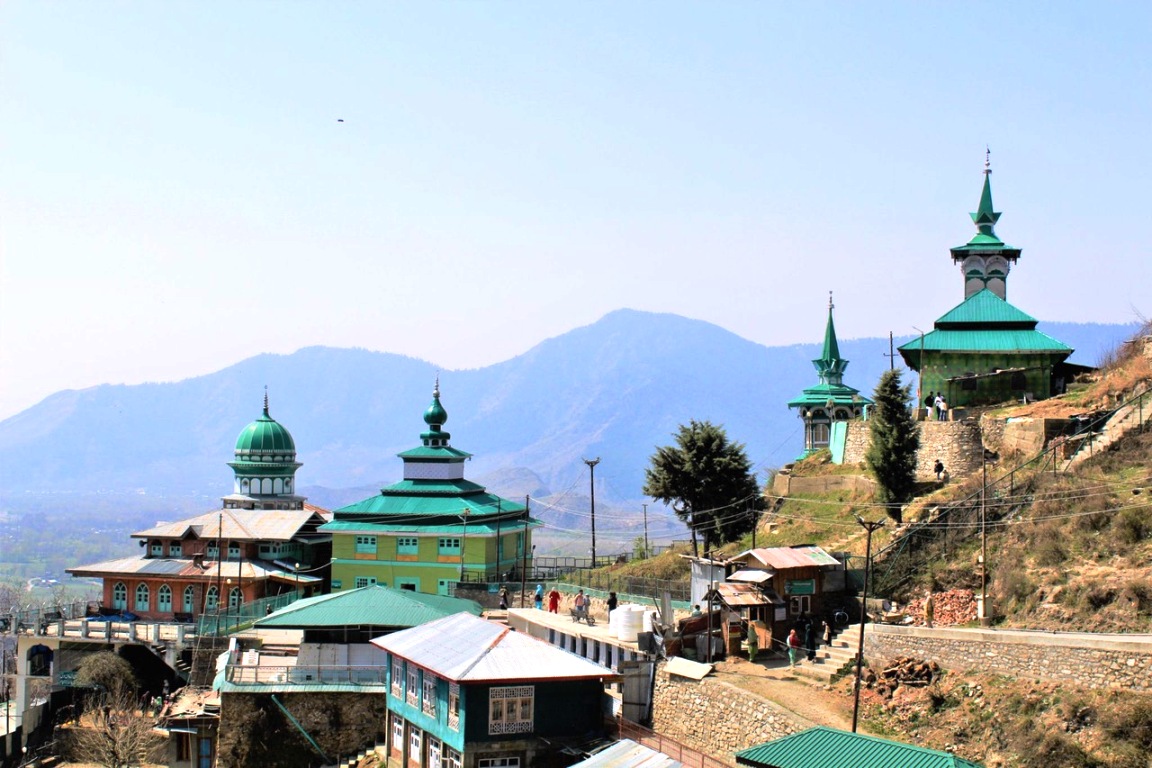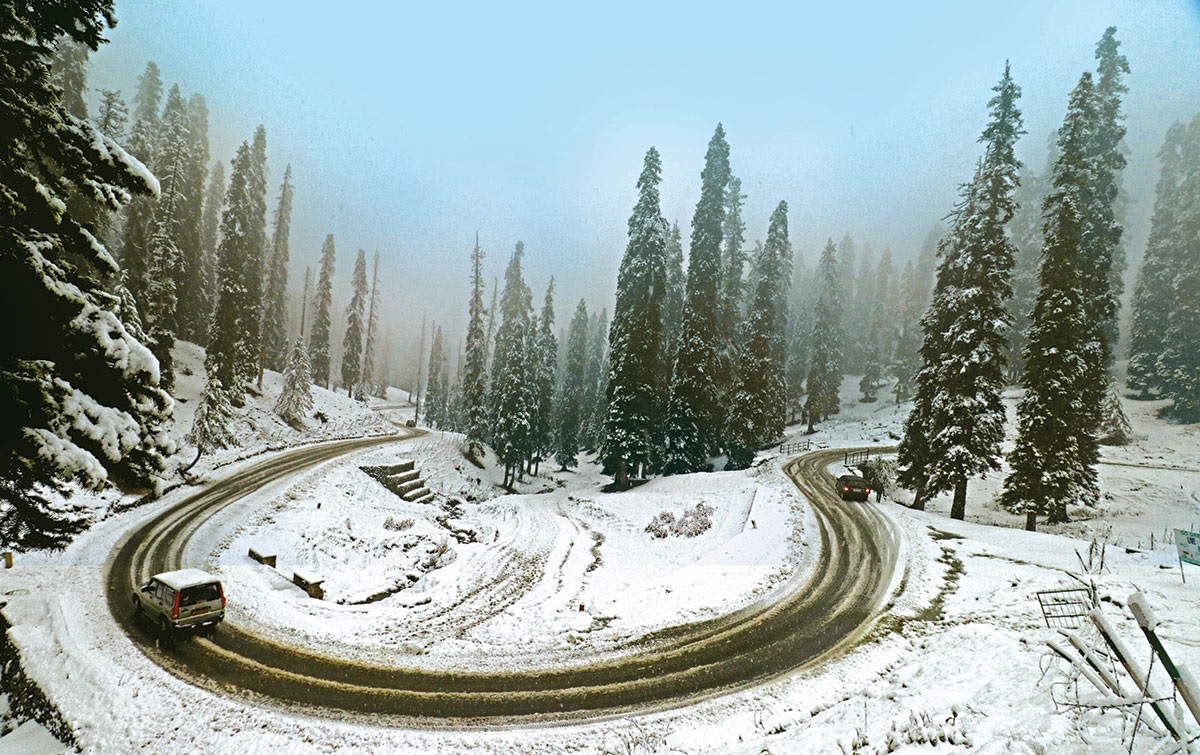by Babra Wani
It is said locally that Aishmuqam is an ancient village and has been a great subject of folklore as well. There are tales of miracles, mythology and supernatural powers associated with this village and Zaen Shah Saeb.

“Laala zoola zaaliyo,
Zaen Shah Saebun khaaliyo”
This local song is often sung at wedding ceremonies in Kashmir, mostly in the Southern parts. Zaen Shah Saeb, is one of the most famous Sufi saints of Kashmir, who has, the legend goes, his mortal remains at four places, Aishmuqam, Gofbal, Sarbal and Pendobal. There is a famous Kashmiri saying about the Sufi saint that goes like this, “Sar Chas Sarbal, Gof Chas Gofbal, Peand Chas Pendobal, Ash Chas Ashmuqam.” This Kashmiri saying is widely famous among the older generation of the area. The most famous shrine among the four is at Aishmuqam.
One of the most famous places in Kashmir, Ashmuqam is located on the right side of the Srinagar-Anantnag-Pahalgam road. A beautiful village, Ashmuqam has bustling markets, friendly and helpful people and small restaurants, food junctions and dhabas like Kareem Restaurant, and Wani Restaurant. The area has become a major stop for tourists, who are on the way to scenic Pahalgam and its picnic spot cluster.
Bharr Do Jholi
Even when there are no tourists, the village is still crowded, thanks to the shrine of Zaen Shah Saeb, locally known as Baadshah. It is the shrine and not its location that has bestowed identity on this village. It often attracts people from Bollywood for shoots. The famous song Bharr Do Jholi Meri Ya Muhammad Lot Kar Mae Na Jaawuga Khaali was shot on the premises of the shrine in Aishmuqam. And just like the lyrics of the song, people from across Kashmir and outside Kashmir also come to this Shrine to pray and make supplications there, irrespective of their beliefs.
This village has both spiritual and landscape appeal and attracts tourists both locals and non-natives.
It is said locally that Aishmuqam is an ancient village and has been a great subject of folklore as well. There are tales of miracles, mythology and supernatural powers associated with this village and Zaen Shah Saeb.
In Aishmuqam there are spiritual gatherings every year locally known as Maele and Urs, which sometimes continue for over a month, mostly during the month of April. However, the residents insist that the real spiritual gatherings last only for three days during which the locals abstain from eating any kind of meat. Following the maele, which is to commemorate Zaen Shah Saeb, there is another spiritual day observed in the following month. During these spiritual gatherings, the locals burn wood and do zool (lighting) in their houses and in the area, and the whole area lights up giving it a different glittering look.
What is interesting, a lot of the ‘faithful’ who follow the Zain Shah Saeb also join the Urs and participate in the Zool festival. Of late, even the tourism department is joining this festival as it offers fascinating pictures.
The Spiritual Connect
With the Shrine on the top of a hillock the visitors have to walk through the road known as Ziyarat Road and walk to a long stair made of stone that connects to the Shrine, the stair has more than 300 steps which the devotees and visitors walk to reach the shrine. There are two khanqahs as well, attached to the shrine. There are relics in these khanqahs, which are occasionally displayed publicly.
Since this village has spiritual significance, there are several mosques that can be found in the area. Like Jamia Masjid which was constructed by Fakeer Abdur Rahman from Khimmar, Ameer Kabeer Masjid just near the shrine. On Fridays, in particular people from Aishmuqam and its adjacent villages come to offer their prayers at the Jamia Masjid there.
The village has also been home to several great Sufi buzargs and peers like Peer Hassan Saeb, Rafi Saeb, Peer Ghulam Nabi, Moamme Saeb, Sufi Malang Qaedir Bab.
It is said that the Aasa e Mubarak of Hazrat Eesa (Jesus) has been kept safely in the area as well.
Another major attraction that is present in the locality is a Hindu temple where local Hindus visit to pray.
Since this village falls on the route of Amarnath Yatra, the Hindu pilgrims en route to Pahalgam often stop at a place in Aishmuqam known as Goswain Park also known as Saadhu Paddhaaw. The pilgrims before taking the annual Charri Mubarak to the pilgrimage, stop at the park, where they use to decorate the Charri and sing Bhajans. This park is located near the Gulshan Park.
Other Major Attractions
Aishmuqam is also known for the Shah Kol a stream, which was constructed by the famous king of Kashmir Zainnul Aabideen Budshah. This stream provides irrigation water to the villages surrounding Aishmuqam. The stream also provides relief to young children from the scorching heat and sun in the summers.
Gulshan Park is a beautiful park which was constructed by the government in Mufti Muhammad Syed era. The park acts as a relaxing point for many locals and non-locals on lazy Sundays and during the festivities of Maele, people in huge numbers throng to the Gulshan Park to relax and rest. Even during the Eid festivities, people gather in the park with their friends and families. The park is located on the banks of Shah Kol, giving it a very peaceful and serene look.
The village is based on small mohallas like Sakka Mohalla, Peer Mohalla, Maddae Mohalla, Aadbal, Bimdaar etc.
It is said that the Baekirkhaani of Aishmuqam cannot be found anywhere else. One of the main attractions of the village is the kandur-made baekirkhaani tsoat. The baekirkhaani is a local crispy and fluffy bread, baked primarily on ghee in the tandoor often relished with kahwa or the noon chai. The area is also famous for the kandurs or naan-waayis (baker).
Recently a marriage hall was also constructed in the area, which is the first of its kind in the area.
Aishmuqam is also home to a very old, aged and famous Chinar tree popularly known as Maet Khanni Booin. Booin is the local name for Chinar.
There is another place located in the area known as Bonni Bhaag, where there are a lot of Chinar trees located.
Residents believe that there are almost seven old vintage houses in the locality, constructed many decades ago on the vintage style architecture, made of wood, mud and hay.
The people of the area are mostly dependent on the Shrine and related activities for their livelihood.
The other areas that are worth seeing are Pendobal, Tchenan Naad etc.
The monje and halwe market of the area is also very famous among both the locals and the tourists.
Besides, there are several government schools in the area.
The Aishmuqam bus terminal is also very famous and is always crowded with people from across the district.















